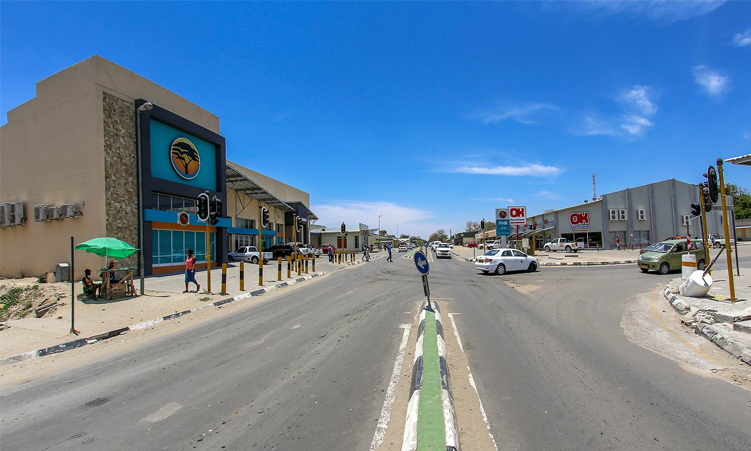Muyako village senior headman Edwin Mweti says not much has come from promises of development made by government officials over the years in the Katima Mulilo Rural constituency, which still faces challenges of water scarcity and poor road infrastructure.
According to the 2023 population and housing census preliminary report, Katima Mulilo Rural has a population of 24 016 in an area of 1 620 square kilometres.
As such, villagers claim that despite being the second largest constituency in the Zambezi region, it is considerably underdeveloped compared to the other seven constituencies.
During an interview with The Namibian on Sunday, Mweti said over the past decade, projects like the Katima Mulilo-Ngoma pipeline and the upgrading of the Bukalo-Muyako-Ibbu-Ngoma road to a tarred road are still unrealised dreams.
According to Mweti, during the 2020 regional council and local authority election campaigns, constituency councillor Matengu Simushi on many occasions talked about how plans were at an advanced stage, thus they should have been completed by now.
“However, it did not materialise and we have not been informed as to what’s causing the delay. All our efforts to get answers are in vain because our letters written to the responsible parties went unanswered. This matter of the road is really angering us. The implementation of the Katima Mulilo/Ngoma water pipeline will bring relief to tens of thousands of people, as we are currently suffering. Muyako was earmarked for the construction of boreholes in order to make water challenges a thing of the past. This is currently a ghost project as well.
“We will not accept empty promises from politicians anymore, because they now want our votes since elections are approaching. They must act now. We are unhappy. We want our road to be tarred and accessible safe drinking water,” he said.
He asserted that if properly developed, the Katima Mulilo Rural constituency would be able to fully realise its tourism potential and become an economic hub for the region.
“It is on this road that you find Lake Liambezi, which is a great source of fishing activities and rich land for cultivation. This is also where we find large deposits of quality gravel. It also has a large conservation area with potential for tourism activities. The constituency also borders Botswana, with long-term plans to bring another dedicated port of entry between the Muyako and Mahundu areas from Satau in Botswana. It also connects more than seven government schools and clinics,” he said.
Concerned villager Christopher Ndereki yesterday said residents are suffering due to the lack of a clinic in the area and nurses are currently operating out of a house.
He also lamented the quality of water which he said is not fit for human consumption and has led to the deaths of some residents.
“We continue to air our concerns to our leaders, but nothing changes in our area. They have neglected us completely – the very same people who are voting for them. They have turned us into voting idiots, because during election time they come to us and tell us tenders were awarded, but after elections nothing happens,” he said.
Ministry of Agriculture, Water and Land Reform spokesperson Jona Musheko yesterday expressed empathy with the villagers affected by water scarcity, but noted that they are working towards resolving these challenges.
He said through funding provided by the African Development Bank (AfDB) and co-funded by the government, the major pipeline project earmarked for across the Zambezi region is at an advanced stage, with the review of the environmental impact assessment by the AfDB currently underway.
“Once completed, the construction will commence immediately. The pipeline project is a long-term solution meant to supply water to areas such as Muyako and others. In the meantime, the provision of pilot mini-desalination plants is an immediate solution. We have set up three in the Zambezi region, namely in Makanga, Ngo and Muyako, whereby the two mini-desalination plants at Ngo and Makanga are all operational. However, the mini-desalination plant at Muyako is also ready but the water quality is still not up to standard, hence the delay in operationalising it as we are currently busy re-adjusting the plant to give us better water quality.
“As we speak today, the engineers are on site to finalise the technical work for the plant to be ready, namely installing new membranes,” he said.
Roads Authority (RA) chief executive Conrad Lutombi, responding to questions sent to him by The Namibian yesterday, said they have completed the detailed design for Bukalo-Muyako-Ngoma and the Sizimbukwa-Sikanjabuka roads, which is 75 kilometres.
He added that during the 2024/25 financial year, they will commence with the procurement of a contractor to start working on it, depending on funding.
“This project has been on the RA’s priority list and we are eager to commence the construction of the project, however, financial constraints remain a the major challenge the RA is facing, given the competing needs of the various regions. The insufficient allocation of funds negatively affects the implementation schedule of planned projects per the approved medium- to long-term master plan,” he said.
Questions sent to Simushi to obtain comment went unanswered yesterday.
Stay informed with The Namibian – your source for credible journalism. Get in-depth reporting and opinions for
only N$85 a month. Invest in journalism, invest in democracy –
Subscribe Now!






